Access to proper sanitation and hygiene is a fundamental human right, yet millions still lack this essential resource. If you’re committed to supporting innovative solutions for sustainable water access, the WASHEM model offers a promising approach. How does WASHEM innovate to ensure proper sanitation and hygiene access?
This article will explore the WASHEM (Water, Sanitation, and Hygiene Enterprise Model) approach, detailing its innovative strategies to provide sustainable access to proper sanitation and hygiene. We’ll delve into the mechanisms, technologies, and community engagement tactics that make WASHEM a leading model in water sustainability.
A Detailed Explanation of the WASHEM
Social Enterprise
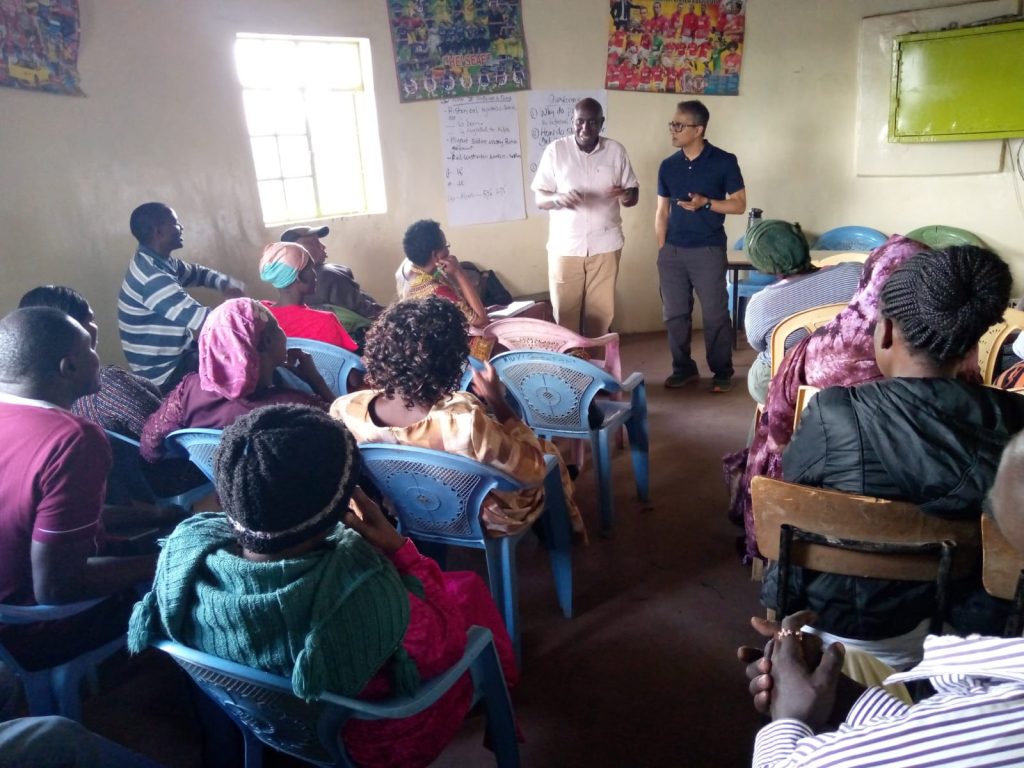
The social enterprise aspect of WASHEM focuses on empowering local communities, particularly the youth and women, by providing them with training and employment opportunities. The revenues generated from the WASH facilities are used to pay for maintenance and salaries, creating a self-sustaining model that also contributes to the local economy.
Scalability of WASHEM
Replicable Framework
The WASHEM model is designed to be easily replicable in different regions and contexts. Its framework includes a clear set of guidelines and best practices that can be adapted to local conditions. This flexibility allows for the customization of the model to address specific WASH challenges in various communities. The success of the WASHEM model in different settings demonstrates its potential for widespread adoption.
Public-Private Partnerships (PPP)
Public-private partnerships are central to the scalability of the WASHEM model. By bringing together resources and expertise from both the public and private sectors, WASHEM ensures the effective implementation and sustainability of WASH projects. These partnerships enable the pooling of financial and technical resources, making it possible to scale up initiatives rapidly and efficiently. The collaborative approach also enhances community buy-in and long-term commitment to maintaining WASH facilities.
Community-Driven Approach
A critical factor in the scalability of the WASHEM model is its community-driven approach. By actively involving local communities in the planning, implementation, and management of WASH projects, WASHEM ensures that solutions are tailored to the specific needs of the community.
This participatory approach fosters a sense of ownership and responsibility, which is crucial for the sustainability of WASH facilities. As communities take charge of their water and sanitation resources, they become more resilient and capable of maintaining and expanding these services.
The innovation and scalability of the WASHEM model are key to its success in addressing water, sanitation, and hygiene challenges in underserved communities. By integrating advanced technologies, leveraging public-private partnerships, and adopting a community-driven approach, WASHEM provides sustainable and impactful WASH solutions that can be replicated across various regions.
The model’s flexibility and focus on local empowerment ensure that it can adapt to different contexts and scale effectively, improving the lives of countless individuals and communities.
The Role of WASHEM in Improving Sanitation and Hygiene in Urban Area Areas
Sanitation and hygiene are critical components of the WASHEM model. In urban areas, where access to proper sanitation facilities is often limited, WASHEM implements innovative solutions to improve hygiene practices and reduce the prevalence of waterborne diseases.
Building and Rehabilitating Sanitation Facilities
WASHEM focuses on building and rehabilitating sanitation facilities in urban areas. These facilities are designed to be user-friendly and accessible to all, including persons with disabilities. By providing clean and safe sanitation options, WASHEM helps to prevent open defecation and other unsanitary practices that pose significant health risks.
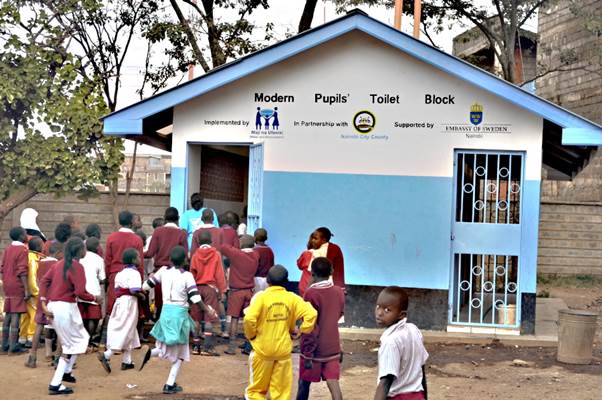
Promoting Hygiene Practices
Education and behavior change are key to improving hygiene practices in urban areas. WASHEM conducts regular hygiene promotion campaigns, teaching communities the importance of handwashing, proper waste disposal, and other essential hygiene practices. These campaigns are often carried out in collaboration with local health workers and community leaders.
Empowering Communities Through the Water, Sanitation, and Hygiene Enterprise Model (WASHEM)
Empowerment is at the heart of the WASHEM model. By providing communities with the tools, knowledge, and infrastructure needed to manage their water and sanitation resources, WASHEM fosters a sense of ownership and responsibility.
Training and Capacity Building
WASHEM invests heavily in training and capacity building. Community members, particularly the youth, are trained in business management, commercial marketing, and WASH practices. This training equips them with the skills needed to manage WASH facilities effectively and sustainably.
Financial Independence
The social enterprise model employed by WASHEM ensures that the facilities generate enough revenue to cover operational costs and provide a stable income for those managing them. This financial independence is crucial for the long-term sustainability of the projects and helps lift communities out of poverty.
The WASH facilities are self-sustaining through the community-based WASHEM franchise model. Community groups with winning business plans receive training in business and mentorship to operate the facilities profitably under strict hygiene standards. Revenue is generated through a pay-per-use (PPU) model, ensuring that all services provided are paid for. This model not only provides employment but also generates income for further investment while building community knowledge, ownership, and social capital.
By charging user fees using the social-enterprise model, WASHEM facilities do not depend on additional injections of funds. The revenue raised covers all operational costs, including materials such as tissue paper and water, as well as staff salaries. This ensures the maintenance of quality and affordable services. Any excess profit is channeled towards the establishment of new units, promoting the facilities’ organic growth and ensuring their sustainability.
Gender and Inclusivity
WASHEM initiatives also contribute to gender equality by empowering women through better access to water and sanitation. Women and girls, who often bear the burden of water collection, benefit significantly from improved WASH services. This not only reduces their workload but also allows them to spend more time on education and other productive activities, thereby enhancing their overall quality of life and opportunities.
Additionally, WASHEM initiatives ensure that youth and people with disabilities are included and benefit from improved water and sanitation services. By making WASH facilities accessible and accommodating for all, these initiatives promote inclusivity and equal opportunities.
Youth are encouraged to participate in community-based projects, gaining valuable skills and knowledge, while people with disabilities are provided with the necessary facilities to ensure their needs are met, fostering a sense of community and shared responsibility.
Through these efforts, WASHEM not only addresses immediate WASH needs but also supports broader goals of gender equality and social inclusion, contributing to the development of more equitable and resilient communities.
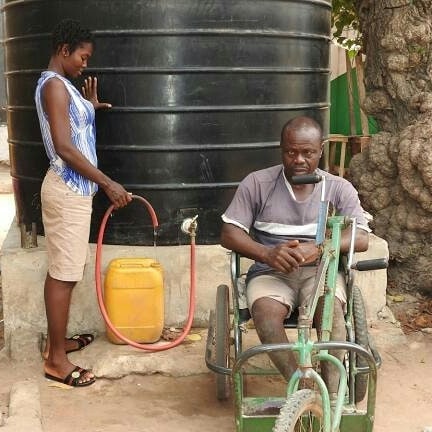
Sustainable Development Goals and WASHEM: A Path to Global Health
The WASHEM model aligns closely with the United Nations Sustainable Development Goals (SDGs), particularly those related to proper sanitation and hygiene and sanitation (Goal 6), good health and well-being (Goal 3), and decent work and economic growth (Goal 8).
Contribution to SDG 6
WASHEM’s primary focus on providing sustainable access to proper sanitation and hygiene and improved sanitation directly contributes to SDG 6. By implementing innovative solutions and engaging communities, WASHEM ensures that these services are accessible, affordable, and sustainable.
Enhancing Health and Well-being
Improved WASH services lead to better health outcomes, reducing the incidence of waterborne diseases and other health issues related to poor sanitation. This contributes to SDG 3 by promoting good health and well-being for all community members.
Economic Growth and Employment
By creating job opportunities and fostering economic growth, WASHEM supports SDG 8. The social enterprise model not only improves health and hygiene but also provides stable employment and income for community members, particularly the youth.
Case Studies: Success Stories of WASHEM Implementation Across Various Regions
WASHEM has been successfully implemented in various regions, each with its unique challenges and achievements. These case studies highlight the impact and effectiveness of the model:
Kongowea Market, Mombasa
Kongowea Market in Mombasa, Kenya, is a prime example of the WASHEM model in action. Before WASHEM’s intervention, the market’s sanitation facilities were dilapidated, and the area was plagued by waterborne diseases. The market, which serves over 30,000 traders and customers daily, was in a state of severe neglect.
Dilapidated sanitation facilities, lack of proper sanitation and hygiene, and poor hygiene practices contributed to frequent outbreaks of waterborne diseases, posing a significant health risk to the market’s users.
The Situation Before WASHEM
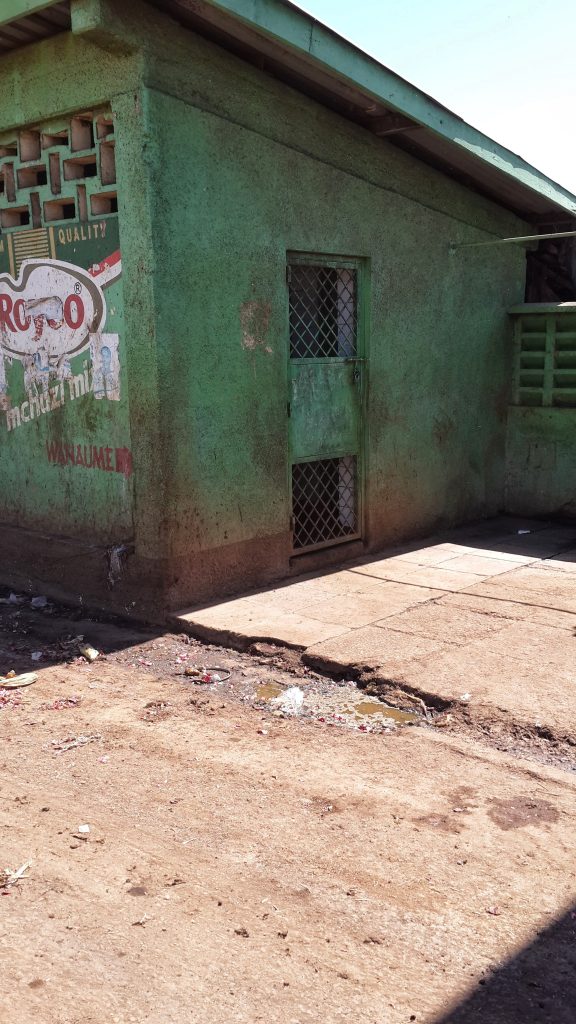
Prior to the intervention, Kongowea Market was characterized by:
- Inadequate Sanitation Facilities: The few existing toilets were in poor condition, often blocked and overflowing. The stench from these facilities could be smelled from a distance, and open defecation between stalls was common.
- Health Hazards: The market was a breeding ground for waterborne diseases such as cholera and typhoid. The lack of proper sanitation and hygiene for drinking and washing exacerbated these health issues.
- Insecurity: The unsanitary conditions and lack of proper facilities made the market a hotspot for criminal activities. Jobless youth roamed the market, engaging in pickpocketing and other antisocial behaviors. Women and girls, who form the majority of the market’s users, were particularly vulnerable to harassment and assault.
- Economic Struggles: The poor conditions also had economic implications. Many traders and customers avoided the market due to health and safety concerns, leading to reduced business activity and income for those who relied on the market for their livelihoods.
WASHEM’s Intervention
Through a unique partnership with the Mombasa County Government, Kongowea Traders Association, and local stakeholders, WASHEM undertook a comprehensive rehabilitation of the market’s sanitation facilities. With seed funding from the Government of Sweden, the initiative aimed to transform Kongowea Market into a cleaner, safer, and more economically vibrant environment.
Key components of the intervention included:
- Rehabilitation of Sanitation Facilities: WASHEM rehabilitated 60 toilets, ensuring they were clean, safe, and accessible. These facilities were designed to be inclusive, catering to the needs of women, persons with disabilities, and the general public.
- Community Involvement: An open, participatory approach was employed to identify project sites, participants, and beneficiaries. Local municipal councils, community leaders, and the traders’ association were actively involved in the planning and implementation phases.
- Youth Empowerment: Youth from the local community were organized into strong groups and trained in business management, commercial marketing, and customer service. This training enabled them to manage the hygiene and sanitation services effectively.
- Financial and Administrative Sustainability: The model adopted a social enterprise approach, running the sanitation services as a business. Revenue generated from user fees was used to cover operational and maintenance costs, pay salaries, and invest in community development initiatives.

Outcomes and Impact
The WASHEM intervention at Kongowea Market resulted in significant positive outcomes:
- Improved Health and Hygiene: The clean and well-maintained sanitation facilities drastically reduced the incidence of waterborne diseases. The overall hygiene standards of the market improved, contributing to a healthier environment for traders and customers.
- Economic Benefits: The initiative provided employment opportunities for over 100 local youths, who were employed to manage the facilities. These youths not only earned a stable income but also gained valuable skills and experience. The increased confidence and financial independence enabled many to pursue further education and training.
- Social Impact: The project fostered a sense of pride and ownership among the youth and the broader community. The youths involved in the project started mentorship programs to encourage others and became key trainers for upcoming projects. The community saw a reduction in criminal activities, with former street children and jobless youth now engaged in productive and meaningful work.
- Revenue Generation: The sanitation facilities served approximately 30,000 users daily, generating an average revenue of over US$900 per day. This revenue was reinvested into the community, funding vocational courses for disabled individuals and other community development projects.
- Replicable Model: The success of the Kongowea Market project attracted attention from other regions. Delegations from other counties visited the site to learn about the model, and efforts were made to replicate the success in other markets and public spaces across Kenya.
Celebrating Success
The success of the WASHEM intervention at Kongowea Market was recognized with the AfricaSan Award for Youth, awarded by AMCOW (African Ministers’ Council on Water) and UNICEF. The award celebrated the innovative approach to transforming the lives of youths and improving public sanitation. This recognition also led to further investment and commitment from the Mombasa County Government and other stakeholders to expand the initiative.
In a celebratory event, Mombasa Governor Ali Hassan Joho, alongside representatives from UNICEF and other local and international organizations, highlighted the project’s impact and future potential. The Governor announced plans to replicate the model across Mombasa County, including rehabilitating additional public toilets and developing a solid waste management plant to further improve the market’s environment.
The Kongowea Market project stands as a testament to the transformative power of the WASHEM model. By addressing critical WASH needs through innovative solutions, community engagement, and sustainable business practices, WASHEM has created a cleaner, healthier, and more prosperous environment for one of Kenya’s largest markets.
Bangladesh Informal Settlement, Mombasa
In the heart of Mombasa lies Bangladesh, an informal settlement that faced severe challenges in water, sanitation, and hygiene (WASH). The community struggled with inadequate sanitation facilities, poor hygiene practices, and frequent outbreaks of waterborne diseases. The WASHEM model’s intervention in Bangladesh showcases the transformative power of innovative WASH solutions and community engagement.
The Situation Before WASHEM
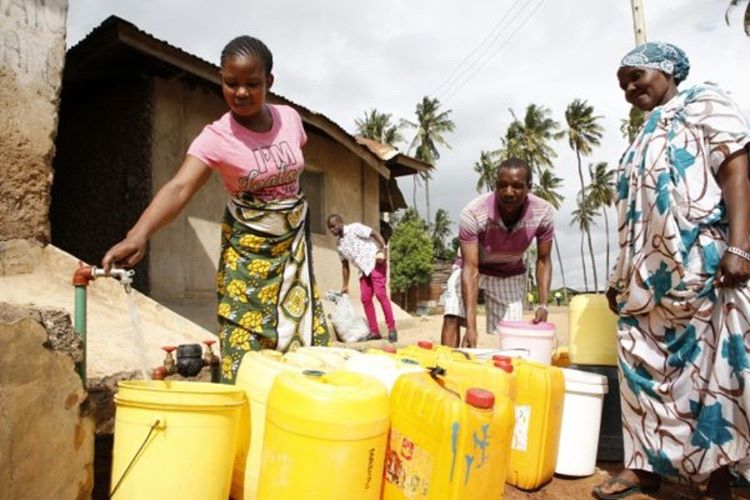
Before WASHEM’s intervention, the Bangladesh informal settlement was plagued by:
- Inadequate Sanitation Facilities: The settlement had a severe shortage of sanitation facilities. The few available toilets were in deplorable condition, leading to widespread open defecation.
- Health Hazards: The lack of proper sanitation and hygiene and proper sanitation contributed to frequent outbreaks of waterborne diseases such as cholera, dysentery, and typhoid fever. These diseases pose significant health risks, particularly to children and the elderly.
- Poor Hygiene Practices: Without proper education and resources, the community struggled with poor hygiene practices. Handwashing and other basic hygiene practices were not commonly observed, further exacerbating the spread of diseases.
- Economic and Social Strain: The health issues and poor sanitation conditions placed a significant economic and social strain on the community. Many residents lost workdays due to illness, and children often missed school, hindering their education and future prospects.
WASHEM’s Intervention
Recognizing the urgent need for intervention, WASHEM partnered with local stakeholders to rehabilitate the settlement’s sanitation facilities and implement comprehensive hygiene education programs. The intervention included:
- Rehabilitation of Public Toilets: WASHEM rehabilitated existing public toilets and constructed new facilities to meet the community’s needs. The toilets were designed to be durable, accessible, and easy to maintain.
- Hygiene Education Programs: WASHEM conducted extensive hygiene education campaigns to promote proper hygiene practices. These programs targeted both adults and children, emphasizing the importance of handwashing, safe water storage, and sanitation.
- Community Involvement: The project employed a participatory approach, involving community members in planning and implementation. Local leaders, health workers, and residents were engaged to ensure the solutions were culturally appropriate and widely accepted.

Outcomes and Impact
The impact of the WASHEM intervention in Bangladesh has been profound:
- Reduced Prevalence of Waterborne Diseases: The incidence of waterborne diseases significantly declined following the rehabilitation of sanitation facilities and the implementation of hygiene education programs. The community experienced fewer outbreaks of cholera, typhoid, and dysentery, leading to improved health outcomes.
- Improved Hygiene Practices: The hygiene education programs successfully instilled better hygiene practices among community members. Handwashing with soap became a common practice, and residents learned the importance of safe water storage and proper sanitation.
- Enhanced Quality of Life: The improved sanitation facilities and better hygiene practices contributed to a higher quality of life for the residents. Children were healthier and could attend school regularly, while adults experienced fewer illness-related work absences, boosting the community’s economic productivity.
- Community Empowerment: The participatory approach of the WASHEM model empowered the community. Residents took pride in their improved environment and became active participants in maintaining the new facilities and promoting hygiene.
Testimonies and Success Stories
The success of the WASHEM intervention in Bangladesh is reflected in the testimonies of the community members:
- Amina, a local resident: “Before the new toilets were built, we suffered a lot. The old toilets were always dirty, and we had no choice but to relieve ourselves in the open. Now, we have clean toilets, and our children are healthier. We are very grateful for the help.”
- Mohamed, a community leader: “The hygiene education programs have made a big difference. People now understand the importance of washing their hands and keeping their surroundings clean. The incidence of disease has gone down, and the whole community is healthier.”
Expanding the WASHEM Model: Lessons Learned and Future Plans
The success of the WASHEM intervention in Bangladesh has provided valuable lessons for future projects:
- Importance of Community Engagement: Engaging the community from the outset ensures that the solutions are tailored to their specific needs and fosters a sense of ownership and responsibility. This participatory approach is critical for the long-term sustainability of WASH initiatives.
- Comprehensive Hygiene Education: Hygiene education is essential to complement infrastructure improvements. Without proper education, new facilities alone are insufficient to achieve lasting health benefits.
- Partnerships and Collaboration: The success of the WASHEM model is built on strong partnerships with local governments, NGOs, and community organizations. Collaborative efforts enhance resource mobilization and ensure the effective implementation of WASH projects.
Building on the success in Bangladesh, WASHEM plans to expand its interventions to other informal settlements in Mombasa and beyond. By replicating the model’s core principles—innovative solutions, community engagement, and sustainable practices—WASHEM aims to create healthier and more resilient communities across Kenya.

Gender Equality and WASHEM: Empowering Women Through Better Water and Sanitation
Gender equality is a critical focus area for the WASHEM model, as it directly impacts the well-being of women and girls in underserved communities.
Reducing the Burden of Water Collection
In many parts of the world, women and girls are primarily responsible for collecting water, a task that can take several hours each day. WASHEM initiatives reduce this burden by providing reliable and nearby sources of proper sanitation and hygiene. This allows women and girls to devote more time to education, work, and other productive activities.
Enhancing Safety and Privacy
Access to clean, safe, and private sanitation facilities is crucial for women’s health and dignity. WASHEM ensures that sanitation facilities are designed with the specific needs of women in mind, including adequate lighting and privacy measures. This reduces the risk of harassment and assault, making it safer for women and girls to use these facilities.
Promoting Women’s Leadership
WASHEM empowers women by involving them in the management and operation of WASH facilities. Women are trained in business management and leadership skills, allowing them to take on key roles in their communities. This not only improves their economic status but also enhances their influence and decision-making power within their communities.
Community Engagement and WASHEM: Building Local Ownership for Sustainable Solutions
Community engagement is at the heart of the WASHEM model. By actively involving local communities in every stage of the project, WASHEM ensures that WASH initiatives are sustainable and tailored to the community’s unique needs.
Participatory Planning and Design

WASHEM employs a participatory approach to planning and designing WASH facilities. Community members are involved in identifying needs, selecting sites, and designing facilities. This ensures that the solutions are culturally appropriate and widely accepted by the community.
Capacity Building and Training
To foster long-term sustainability, WASHEM provides extensive training to community members. This includes training in facility management, hygiene practices, and business skills. By building local capacity, WASHEM ensures that communities can maintain and manage WASH facilities independently.
Fostering Community Pride and Ownership
When communities are involved in the creation and management of WASH facilities, they develop a sense of pride and ownership. This increases their commitment to maintaining the facilities and promotes a culture of hygiene and sanitation within the community.
WASHEM and Climate Change: Building Resilient Water and Sanitation Systems
Climate change poses significant challenges to water and sanitation systems, particularly in vulnerable communities. WASHEM addresses these challenges by building resilient systems that can withstand the impacts of climate change.
Flood-Resistant Infrastructure
In flood-prone areas, WASHEM designs and constructs flood-resistant water and sanitation infrastructure. This includes elevated water storage tanks, reinforced sanitation facilities, and drainage systems to prevent contamination during floods.
Drought Mitigation Strategies
In regions prone to drought, WASHEM implements water conservation and management strategies. Rainwater harvesting, efficient irrigation techniques, and water recycling are some of the methods used to ensure a reliable water supply during dry periods.
Promoting Climate-Smart Agriculture
WASHEM also supports climate-smart agriculture practices that reduce water usage and increase resilience to climate variability. These practices include the use of drought-resistant crops, efficient water management techniques, and soil conservation methods.
Educational Programs in WASHEM: Raising Awareness and Building Capacity
Education is a key component of the WASHEM model. By raising awareness and building local capacity, WASHEM ensures that the benefits of improved water, sanitation, and hygiene are fully realized.
School WASH Programs
WASHEM implements comprehensive WASH programs in schools to promote hygiene education among students. These programs include the installation of proper sanitation and hygiene and sanitation facilities, hygiene education sessions, and forming student-led WASH clubs.
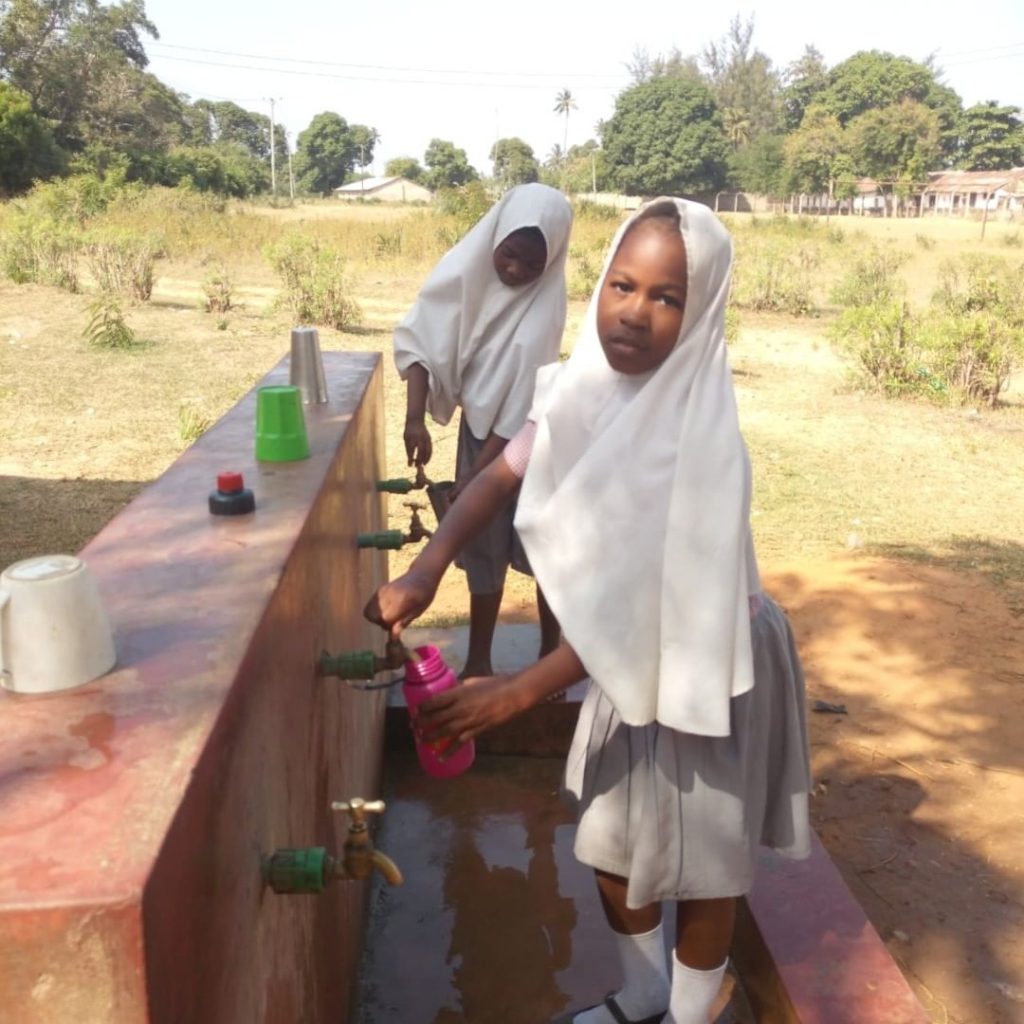
Community Workshops and Training Sessions
WASHEM conducts regular workshops and training sessions for community members. These sessions cover water conservation, sanitation practices, and disease prevention. By educating the community, WASHEM empowers individuals to take charge of their health and well-being.
Collaborations with Local Health Workers
WASHEM collaborates with local health workers to deliver hygiene education and promote good practices. Health workers conduct household visits, provide hygiene kits, and offer guidance on maintaining clean and safe environments.
Public-Private Partnerships in WASHEM: Collaborative Approaches to Sustainable Development
Public-private partnerships (PPP) are a cornerstone of the WASHEM model. By bringing together the resources and expertise of both sectors, PPPs enhance the sustainability and impact of WASH initiatives.
Leveraging Private Sector Resources
The private sector plays a crucial role in funding and supporting WASHEM projects. Companies provide financial resources, technical expertise, and innovative solutions to build and maintain WASH facilities. This collaboration ensures that projects are well-funded and efficiently managed.
Enhancing Government Capacity
PPPs also enhance the capacity of local governments to deliver WASH services. By working together, public and private sectors can pool their strengths and address challenges more effectively. This partnership enables governments to focus on policy-making and oversight while leveraging private sector efficiency in implementation.
Examples of Successful PPPs
One notable example of a successful PPP is the collaboration between Maji na Ufanisi and the Mombasa County Government. Together, they rehabilitated 60 public toilets in Kongowea Market, improving sanitation and creating jobs for local youths. This partnership not only improved health outcomes but also stimulated economic growth in the region.
Monitoring and Evaluation in WASHEM: Ensuring Accountability and Continuous Improvement
Monitoring and evaluation (M&E) are critical components of the WASHEM model. By continuously assessing the effectiveness of its initiatives, WASHEM ensures accountability and fosters continuous improvement.
Regular Assessments and Audits
WASHEM conducts regular assessments and audits of its projects to ensure they meet established standards. These evaluations cover various aspects, including water quality, facility maintenance, and community satisfaction. The findings are used to make informed decisions and implement necessary improvements.
Community Feedback Mechanisms
WASHEM values the input of the communities it serves. Feedback mechanisms, such as surveys and community meetings, are established to gather insights and address concerns. This participatory approach ensures that the projects remain relevant and effective.
Reporting and Transparency
Transparency is a key principle of WASHEM. Detailed reports on project progress, financials, and impact are regularly shared with stakeholders. This openness fosters trust and ensures that all parties are informed and engaged in the project’s success.
Innovative Financing for WASHEM: Funding Sustainable Water and Sanitation Solutions
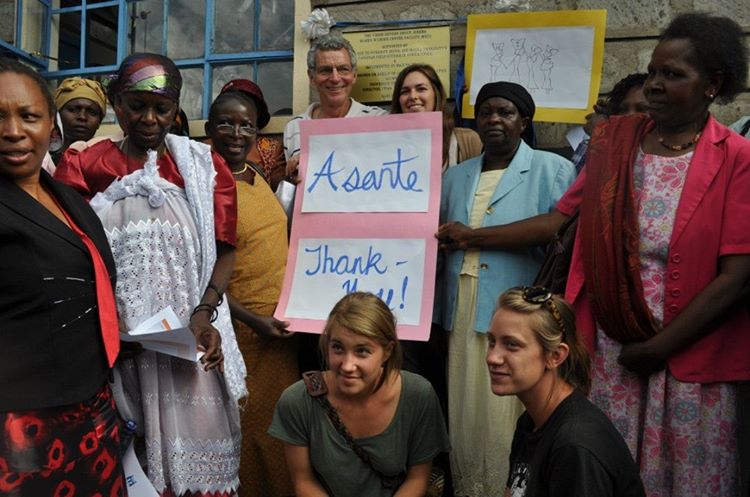
Innovative financing mechanisms are essential for the sustainability and scalability of WASHEM initiatives. By diversifying funding sources, WASHEM ensures continuous support for its projects.
Social Impact Bonds
Social impact bonds (SIBs) are a novel financing mechanism used by WASHEM to attract investment. SIBs involve private investors funding social projects with the promise of returns based on the project’s success. This approach leverages private capital to achieve public goals.
Crowdfunding Campaigns
WASHEM also utilizes crowdfunding platforms to raise funds for specific projects. These campaigns engage a wide audience and allow individuals to contribute directly to initiatives that resonate with them. Crowdfunding not only generates financial support but also raises awareness about WASH issues.
Grants and Donations
Grants and donations from international organizations, governments, and philanthropists are vital for WASHEM’s work. These funds support the implementation and scaling of WASH projects, ensuring that they reach the most underserved communities.
The WASHEM model is a holistic and innovative approach to addressing the challenges of water, sanitation, and hygiene in underserved communities. By leveraging advanced technologies, engaging communities, and fostering public-private partnerships, WASHEM ensures sustainable access to these essential services.
The positive impact of WASHEM initiatives is evident in improved health outcomes, economic development, and community empowerment, making it a model worth replicating across various regions.
Breaking the Cycle of Waterborne Diseases with WASHEM Initiatives
Waterborne diseases are a major health concern in many underserved communities. WASHEM initiatives aim to break this cycle by improving access to proper sanitation and hygiene and promoting proper sanitation and hygiene practices.
Disease Prevention through proper sanitation and hygiene
By providing access to clean and safe drinking water, WASHEM helps to prevent the spread of waterborne diseases such as cholera, typhoid, and dysentery. This is achieved through the installation of advanced water filtration systems and community water kiosks.
Hygiene Education and Behavior Change
Hygiene education is a critical component of WASHEM’s disease prevention strategy. Community members are educated on the importance of handwashing, safe waste disposal, and other hygiene practices that can prevent the spread of diseases.
Impact on Health Outcomes
The impact of WASHEM initiatives on health outcomes is evident in the communities where the model has been implemented. Reduced incidence of waterborne diseases, improved hygiene practices, and better overall health are some of the positive outcomes observed.
The Economic Impact of WASHEM: Creating Jobs and Building Economies
The WASHEM model not only improves health outcomes but also has a significant economic impact on the communities it serves.
Job Creation and Income Generation
By creating job opportunities in the management and maintenance of WASH facilities, WASHEM provides a stable source of income for community members. This income generation contributes to the overall economic development of the area.
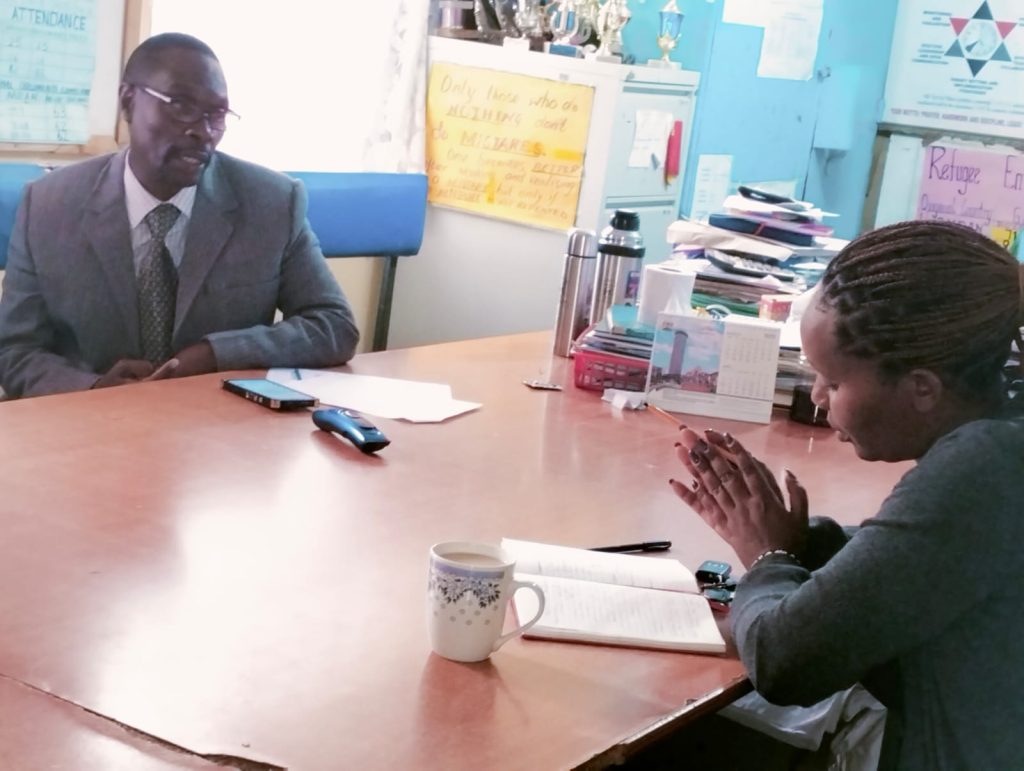
Empowering Local Entrepreneurs
The social enterprise model encourages local entrepreneurship by providing training and support to community members. This empowerment helps to build a more resilient and self-sufficient local economy.
Economic Benefits of Improved Health
Improved health outcomes also have economic benefits. With fewer incidences of illness, community members can be more productive, leading to increased economic activity and reduced healthcare costs.
Collaboration Between Maji na Ufanisi and Mombasa County Government: A Model of Success
The collaboration between Maji na Ufanisi (MnU) and the Mombasa County Government stands as a shining example of how public-private partnerships can drive significant improvements in water, sanitation, and hygiene (WASH) services. This partnership has not only transformed the lives of many residents in Mombasa but has also set a benchmark for similar initiatives across Kenya and beyond.
The Genesis of the Partnership
The partnership between MnU and the Mombasa County Government began with a shared vision: to improve the dire state of WASH facilities in Mombasa’s public spaces. Recognizing the urgent need for intervention, both parties committed to leveraging their strengths and resources to address the challenges faced by the local community.
Key Initiatives and Projects
The collaboration focused on several key initiatives, each aimed at addressing specific WASH-related issues in Mombasa:
- Rehabilitation of Public Toilets: One of the most notable projects was the rehabilitation of 60 public toilets in the Kongowea Market. These facilities were in a state of disrepair, contributing to poor hygiene and frequent outbreaks of waterborne diseases. MnU, with support from the Mombasa County Government, transformed these toilets into clean, safe, and accessible facilities.
- Youth Empowerment Programs: The partnership placed a strong emphasis on youth empowerment. Local youths were trained in business management, hygiene practices, and customer service, enabling them to manage the rehabilitated facilities effectively. This initiative not only provided employment opportunities but also fostered a sense of responsibility and pride among the youth.
- Community Engagement and Education: MnU and the Mombasa County Government worked together to implement comprehensive hygiene education programs. These programs aimed to raise awareness about the importance of proper hygiene practices, such as handwashing and safe water storage, among community members.
Success Stories and Impact
The impact of the MnU and Mombasa County Government partnership has been profound, with several notable successes:
- Improved Health Outcomes: The rehabilitated sanitation facilities and enhanced hygiene education significantly reduced the prevalence of waterborne diseases. The community experienced fewer health issues, leading to improved overall well-being and reduced healthcare costs.
- Economic Empowerment: The initiative created jobs for over 100 local youths, who were employed to manage the WASH facilities. These jobs provided stable income and opportunities for further education and training, contributing to the economic upliftment of the community.
- Increased Community Participation: The participatory approach adopted by MnU and the Mombasa County Government fostered a sense of ownership and pride among community members. Residents became actively involved in maintaining the facilities and promoting hygiene practices, ensuring the sustainability of the projects.
Recognitions and Awards
The success of the partnership was recognized with the prestigious AfricaSan Award for Youth, awarded by the African Ministers’ Council on Water (AMCOW) and UNICEF. This award celebrated the innovative approach to transforming the lives of youths and improving public sanitation. The recognition also attracted further investment and commitment from the Mombasa County Government and other stakeholders to expand the initiative.
Future Plans and Expansion

Building on the success of their collaboration, MnU and the Mombasa County Government have ambitious plans for the future. Key areas of focus include:
- Replication of the Model: Plans are underway to replicate the successful WASH model in other markets and public spaces across Mombasa County. This includes rehabilitating additional public toilets and improving sanitation facilities in underserved areas.
- Solid Waste Management: Recognizing the need for comprehensive waste management solutions, the partnership aims to develop a solid waste management plant. This plant will help manage waste effectively and generate energy, further improving the market’s environment.
- Enhanced Public-Private Partnerships: MnU and the Mombasa County Government are committed to strengthening their collaboration with other stakeholders, including international organizations, NGOs, and private sector partners. These enhanced partnerships will ensure the continued success and sustainability of WASH initiatives.
The collaboration between Maji na Ufanisi and the Mombasa County Government is a testament to the power of public-private partnerships in driving positive change.
By combining their resources, expertise, and commitment, they have successfully transformed the WASH landscape in Mombasa, creating healthier, safer, and more prosperous communities. This model of collaboration serves as an inspiration for other regions and underscores the importance of collective action in addressing global WASH challenges.
Maji na Ufanisi’s Role
Maji na Ufanisi (MnU) plays a crucial role in the success of the WASHEM model. As a leading organization in water and sanitation, MnU provides the expertise, resources, and support needed to implement and sustain WASHEM initiatives. Through strategic partnerships and a commitment to community empowerment, MnU continues to drive positive change and improve the lives of countless individuals.
Expertise in Water and Sanitation
MnU brings a wealth of expertise in water and sanitation, which is vital for the successful implementation of the WASHEM model. With decades of experience in the sector, MnU has developed and refined innovative approaches to address the challenges of water access, sanitation, and hygiene in both urban and urban settings. This expertise ensures that WASHEM initiatives are based on best practices and are tailored to the specific needs of the communities they serve.
Strategic Partnerships
One of the key strengths of MnU is its ability to forge strategic partnerships with various stakeholders, including local governments, international organizations, NGOs, and the private sector. These partnerships are essential for mobilizing the resources and support needed to implement large-scale WASH projects.
By working collaboratively, MnU ensures that WASHEM initiatives are well-funded, efficiently managed, and widely supported.
- Local Government Collaboration: MnU works closely with county governments to identify priority areas for intervention, secure necessary approvals, and ensure alignment with local development plans. This collaboration is crucial for the sustainability and scalability of WASHEM projects.
- International Organizations and NGOs: MnU partners with international organizations and NGOs to access technical expertise, funding, and innovative solutions. These collaborations enhance the capacity of MnU to deliver impactful WASH services and extend their reach to more communities.
- Private Sector Engagement: Engaging the private sector is a cornerstone of the WASHEM model. MnU facilitates partnerships with private companies to leverage their resources, technology, and business acumen. This approach not only brings in much-needed investment but also fosters a culture of corporate social responsibility.
Community Empowerment
At the heart of MnU’s approach is a commitment to community empowerment. MnU believes that sustainable development can only be achieved when communities are actively involved and take ownership of the projects. To this end, MnU employs a participatory approach in all its initiatives, ensuring that community members are engaged from the planning stage through to implementation and management.
- Participatory Planning and Design: MnU involves community members in the planning and design of WASH facilities, ensuring that the solutions are culturally appropriate and meet the specific needs of the community. This participatory approach fosters a sense of ownership and responsibility, which is crucial for the long-term sustainability of the projects.
- Training and Capacity Building: MnU provides extensive training and capacity-building programs for community members. This includes training in WASH management, hygiene education, business skills, and leadership. By equipping community members with the necessary skills and knowledge, MnU empowers them to manage and sustain WASH facilities effectively.
- Youth and Women Empowerment: MnU places a strong emphasis on empowering youth and women, who are often the most affected by poor WASH conditions. Through targeted training and employment opportunities, MnU helps to uplift these groups, providing them with the tools to improve their livelihoods and contribute to community development.
Innovation and Sustainability
Innovation and sustainability are core principles of MnU’s approach. MnU is committed to developing and implementing innovative solutions that address the unique challenges of WASH in underserved areas. This includes leveraging new technologies, adopting environmentally sustainable practices, and continuously improving project designs based on feedback and lessons learned.
- Innovative Technologies: MnU integrates advanced technologies such as smart water management systems, solar-powered solutions, and mobile technology for hygiene education into its projects. These innovations enhance the efficiency and effectiveness of WASH services, ensuring that they are accessible, reliable, and sustainable.
- Environmental Sustainability: MnU is dedicated to promoting environmental sustainability in all its initiatives. This includes the use of renewable energy sources, such as solar and biogas, in WASH facilities, as well as implementing practices that reduce water usage and manage waste effectively. By prioritizing environmental sustainability, MnU helps to build resilient communities that can adapt to the impacts of climate change.
- Continuous Improvement: MnU employs a robust monitoring and evaluation system to assess the impact of its projects and identify areas for improvement. This continuous improvement process ensures that WASHEM initiatives are always evolving and adapting to meet the needs of the communities they serve.
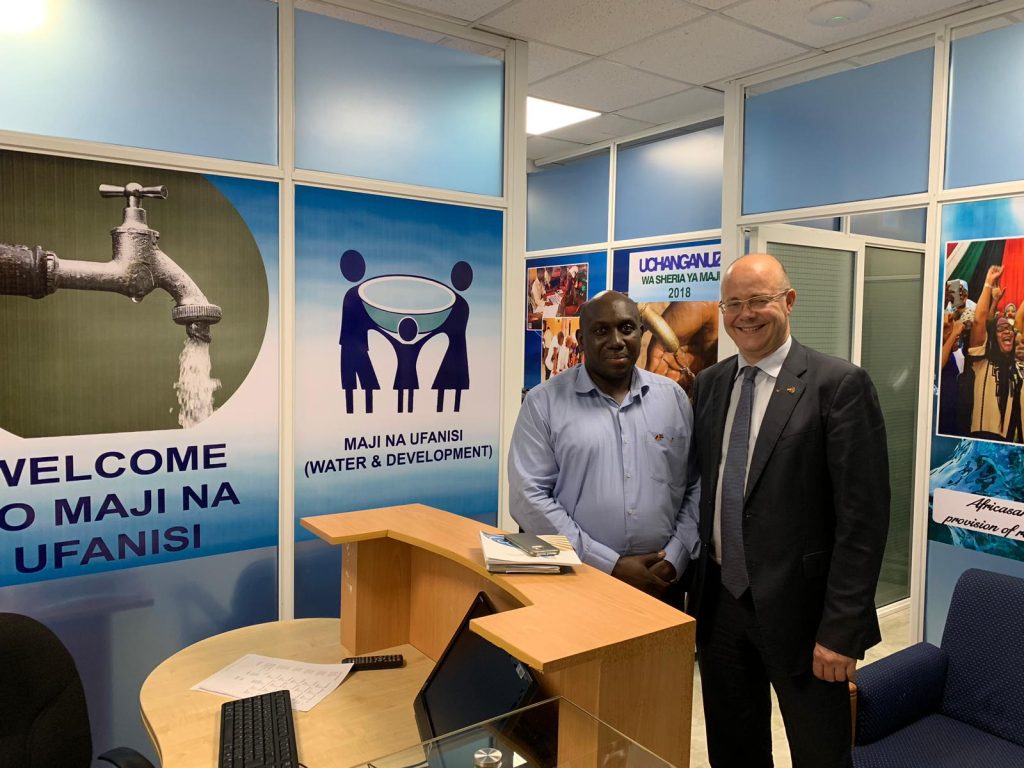
Advocacy and Policy Influence
MnU also plays a significant role in advocating for improved WASH policies and practices at the local, national, and international levels. By leveraging its expertise and experience, MnU influences policy decisions and promotes best practices in the WASH sector.
- Policy Advocacy: MnU works with government agencies, policymakers, and other stakeholders to advocate for policies that support sustainable WASH development. This includes pushing for increased investment in WASH infrastructure, promoting the adoption of innovative solutions, and ensuring that WASH services are inclusive and accessible to all.
- Knowledge Sharing and Networking: MnU actively participates in national and international forums, conferences, and networks to share knowledge, exchange ideas, and collaborate with other WASH practitioners. This engagement helps to disseminate best practices, foster innovation, and build a global community committed to achieving universal access to proper sanitation and hygiene and sanitation.
Maji na Ufanisi’s role in the success of the WASHEM model cannot be overstated. As a leading organization in water and sanitation, MnU provides the expertise, resources, and support needed to implement and sustain impactful WASH initiatives.
Through strategic partnerships, community empowerment, innovation, sustainability, and advocacy, MnU continues to drive positive change and improve the lives of countless individuals. Their commitment to creating healthier, safer, and more prosperous communities exemplifies the transformative power of dedicated and collaborative efforts in the WASH sector.
Recap
The WASHEM model represents a holistic and sustainable approach to addressing the challenges of water, sanitation, and hygiene in underserved communities. By leveraging innovative technologies, community engagement, and public-private partnerships, WASHEM ensures that these essential services are accessible, affordable, and sustainable. The impact of WASHEM initiatives is evident in improved health outcomes, economic development, and community empowerment, making it a model worth replicating across various regions.
FAQs
- What is the WASHEM model?
The WASHEM model is a comprehensive framework designed to address water, sanitation, and hygiene challenges in underserved areas through innovative solutions, community engagement, and public-private partnerships.
- How does WASHEM improve access to proper sanitation and hygiene?
WASHEM improves access to proper sanitation and hygiene by implementing advanced water filtration technologies, rainwater harvesting systems, and community water kiosks.
- What role does community engagement play in WASHEM?
Community engagement is crucial in WASHEM as it ensures that WASH facilities are tailored to the specific needs of the community, fostering a sense of ownership and responsibility.
- How does WASHEM contribute to gender equality?
WASHEM initiatives empower women by improving access to water and sanitation, allowing them to spend more time on education and other productive activities.
- What are the economic benefits of WASHEM?
WASHEM creates job opportunities, provides stable income, and improves health outcomes, leading to increased economic activity and reduced healthcare costs.
- How does WASHEM align with the Sustainable Development Goals (SDGs)?
WASHEM aligns with SDG 6 (proper sanitation and hygiene and sanitation), SDG 3 (good health and well-being), and SDG 8 (decent work and economic growth).
- What is the role of public-private partnerships in WASHEM?
Public-private partnerships bring together resources, knowledge, and expertise from both sectors to build and maintain sustainable WASH facilities.
- How does WASHEM ensure the sustainability of its initiatives?
The sustainability of WASHEM initiatives is ensured through revenue generation, community engagement, and partnerships with various stakeholders.
- What impact has WASHEM had in Mombasa’s Kongowea Market?
WASHEM transformed the Kongowea Market by rehabilitating 60 toilets, improving health outcomes, and creating employment opportunities for over 100 local youths.
- How can other regions replicate the success of WASHEM?
Other regions can replicate WASHEM’s success by adopting its holistic approach, which includes innovative technologies, community engagement, and public-private partnerships.
By adopting and supporting the WASHEM model, we can make significant strides toward achieving sustainable water, sanitation, and hygiene for all, ensuring healthier and more prosperous communities.


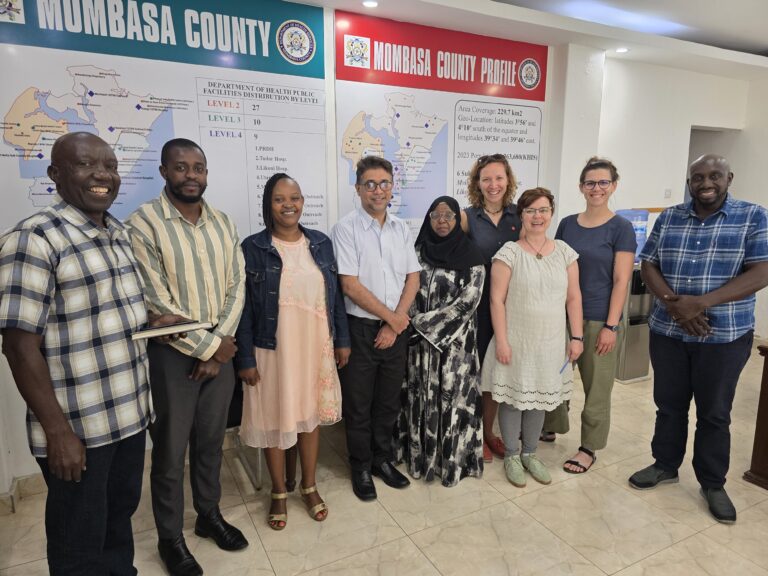

I have gone through your WASHEM blog and it is very impressive.